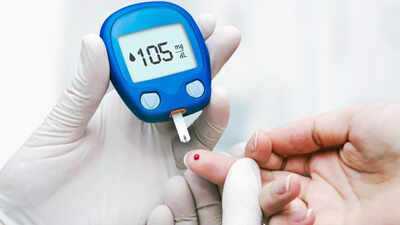
Across India, it is common to see people who look slim, eat moderately, and still end up with type 2 diabetes. This often surprises families because weight has long been viewed as the main indicator of diabetes risk. Yet medical experts now highlight that the Indian population has unique metabolic patterns that make this disease possible even in people who appear healthy from the outside. Understanding why many Indians get diabetes despite being thin helps uncover the deeper factors that influence blood sugar, body composition, and long-term health. Appearance alone simply does not reveal the full story.A peer-reviewed study published in Diabetologia explains that South Asians are biologically more prone to insulin resistance, visceral fat accumulation, and reduced muscle mass even at low body mass index, which helps clarify why many Indians get diabetes despite being thin.These underlying traits make the Indian population more vulnerable, even before lifestyle factors are taken into account.
The thin fat body type explains why many Indians get diabetes despite being thin
One of the strongest explanations for why many Indians get diabetes despite being thin is the “thin fat” body type. Many Indians have lower muscle mass and higher internal fat despite looking lean externally. This internal fat, stored around vital organs, disrupts insulin function and raises blood sugar levels. Someone may weigh very little yet still carry harmful visceral fat that increases diabetes risk. This disconnect between appearance and metabolic health is why experts urge people not to rely on weight alone.
Early life nutrition sheds light on why many Indians get diabetes despite being thin
Experts have long studied how childhood and even prenatal nutrition shapes health later in life. Poor nutrition in early years can limit muscle growth and create long-lasting metabolic weaknesses. This developmental pattern contributes to why many Indians get diabetes despite being thin. Babies who were undernourished in the womb often grow into adults with small frames but higher fat storage efficiency. These individuals can develop diabetes early despite looking slim, highlighting the lasting impact of nutritional gaps.
Genetics and ethnicity contribute to why many Indians get diabetes despite being thin
Genetic predisposition is another major factor behind why many Indians get diabetes despite being thin. South Asians have inherited traits that make them more insulin resistant even before weight is considered. This means that an Indian person with a normal body mass index may still struggle with glucose regulation. Studies show that Indians often experience elevated blood sugar and insulin spikes much earlier than Western populations, making genetic vulnerabilities an important piece of the puzzle.
Visceral fat distribution highlights why many Indians get diabetes despite being thin
Slim Indians may still have disproportionately high amounts of visceral fat stored deep around the abdomen. This is one of the clearest physiological explanations for why many Indians get diabetes despite being thin. Visceral fat is metabolically active and releases inflammatory substances that interfere with insulin. Doctors often measure waist circumference or waist to hip ratio, which reveal risks that weight alone conceals. A person with a small body weight but a larger waistline may actually face higher danger than someone slightly heavier.
Lifestyle patterns also explain why many Indians get diabetes despite being thin
Lifestyle remains a strong contributor to the rise of lean diabetes. Sedentary desk jobs, long hours of sitting, low muscle activity and reliance on refined carbohydrates are common across India. Even thin individuals may consume high amounts of white rice, refined flour, sweets, sweetened tea or packaged snacks. These habits spike blood sugar without contributing to muscle strength. This mismatch between diet and activity helps explain why many Indians get diabetes despite being thin, especially in cities where movement is limited.
Warning signs that reveal why many Indians get diabetes despite being thin
Because many slim people do not expect diabetes, early symptoms often go unnoticed. Warning signs include:
- increased thirst
- frequent urination
- unexplained fatigue
- slow wound healing
- sudden weight loss
- blurry vision
Recognising these early indicators is essential, particularly for individuals who assume they are not at risk due to low body weight.
What slim individuals can do after learning why many Indians get diabetes despite being thin
Once you understand why many Indians get diabetes despite being thin, preventive steps become clearer. These include:
- increasing muscle-building physical activity such as strength training
- reducing refined carbohydrates and replacing them with fibre rich foods
- monitoring waist circumference rather than weight alone
- getting annual blood sugar tests
- choosing balanced meals with protein, vegetables and whole grains
- prioritising sleep and reducing chronic stress
These habits strengthen metabolic health regardless of body size.Learning why many Indians get diabetes despite being thin empowers people to look beyond the scale and focus on hidden risks. Slimness does not guarantee protection. Indian genetics, early life nutrition, internal fat distribution, and lifestyle patterns all shape diabetes risk. With awareness and small, consistent lifestyle changes, the condition can be prevented or managed more effectively. Understanding these hidden risks helps Indians take control of their health before symptoms escalate.Disclaimer: This article is for general informational purposes only and is not a substitute for professional medical advice, diagnosis, or treatment. Always seek the guidance of a qualified healthcare provider regarding any medical condition or lifestyle change.Also read| Which mask is best for air pollution: Check types, features and how to select







